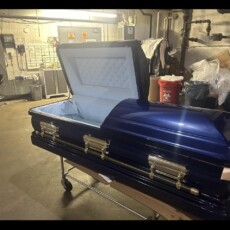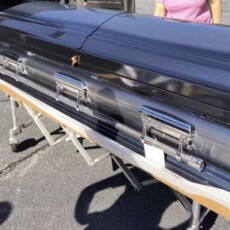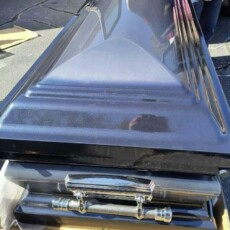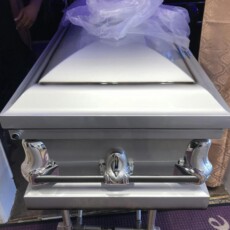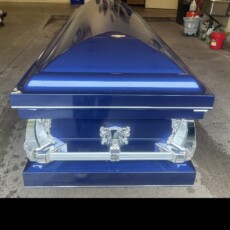Casket Weights
By Casket Emporium March 24,2021
Depending on the intended use of a casket and how it is handled, its weight can be a factor to consider. Having said that, there is no particular predetermined answer to “how much does a casket weigh” or “how heavy is a casket“, but normally is between 60 and 200 lb.
Factors that have an impact in the weight of a casket
There are several factors that can dictate the total weight of a casket. These include the following:
Materials
The materials used to craft a casket is among the major factors that determine its total weight. There is a wide array of materials that can be used, the most common of which are metal and wood.
Wood
Wood Caskets make use of popular hardwood such as cherry mahogany, maple, walnut, pine, and oak. Each of these materials has a different weight. Even specific types of boards can vary in weight, depending on where it is from, the amount of moisture is present in the wood, and its density, among others.
Of all the popular casket wood materials mentioned above, pine is the lightest, weighing only 43 lb. for every cubic foot. Mahogany or cherry are typically the heaviest. Each cubic foot of these woods weighs 53 – 56 lb./cubic foot.
Metal
There are many different types of metal that can be used for caskets. These include stainless steel, carbon steel, and even gold, copper, and other precious metals. A metal casket weight is determined not only by the material. The production method, thickness of the material, and other factors also come into play.
When used to make a metal casket, stainless steel contributes to the total average weight by around 494 lb. for every cubic foot. Gold is heavy, weighing at least 1,200 lb / square foot.
Most metal caskets use anywhere between 16 and 20 gauge thick steel. 20-gauge steel is lighter and thinner than 16 or 18-gauge steel.
Fiberboard or Plywood
Caskets made of fiberboard or plywood are typically covered with solid wood veneer. This is to make it look like it is made of solid wood. It is a more affordable alternative to a solid wood product. You can likewise paint and finish the casket in many different ways. You can cover it with fabric to come up with a more natural, comfortable, and environmentally-sustainable alternative.
Furnishings and Fittings
Caskets are often more than just a metal or wooden box. They are fitted with functional and decorative hardware that include hinges, clasps, and rods to make lifting or moving it easier. Corners, as well as other options to make the casket more attractive and functional also add up to the total weight.
Casket fittings are typically made of heavy brass. The metal is corrosion-resistant and attractive, but it is heavy, and thus contributes further to the weight.
While the materials at the interiors are heavy, the fabric materials inside are light, and do not have a significant impact on the overall weight. These include satin, velvet, crepe, and other light materials.
Size
Of course, the bigger the casket, the heavier it will weigh, given similar produccts of exactly the same materials and ornaments.
Standard Caskets
A standard one measures 24” (width) and 79” (length) inside. A casket of this size will fit a person standing 6’6” tall. But, it can also accommodate people who are 6’7” or 6”8 tall if their knees are bent a bit. To measure the right width, measure the person straight across at the shoulders or elbows. This is often the body part that is the widest. In general, standard caskets should comfortably weigh a person weighing around 350 lb.
Oversized Caskets
Larger-sized or oversized caskets are available for taller or wider people. You can find wider caskets with widths of 27 ½ or 30 ½”. The problem is, standard cemetery plots or vaults only measure 30” wide. A wide one may not fit in a standard-sized burial space, increasing related burial costs, not to mention the effect it will have on the overall weight.
Other Casket Fittings
Caskets are often fitted with handles and rods to make lifting easier – even when they are already quite heavy as they are. Various machines are also used to move, lift, and transport heavier caskets quietly and discreetly. Typically, a “church truck” with 4 wheels is placed under the product, as pallbearers walk along. This is more symbolic than actually carrying and lifting the casket.
Final Words about casket weight
To sum everything up, the total weight depends on various factors. These include the materials it is made of, its size, as well as the fittings it is equipped with. By knowing all the materials and accessories that comprise a single casket, you will appreciate why a single casket can weigh a lot.
Interesting.
Casket weight can vary widely – from 60 lb. to as heavy as 400 lb. or even more. When empty, a regular wooden casket can weigh around 150 to 200 lb.
Did you finally find out how much does a casket weigh?



